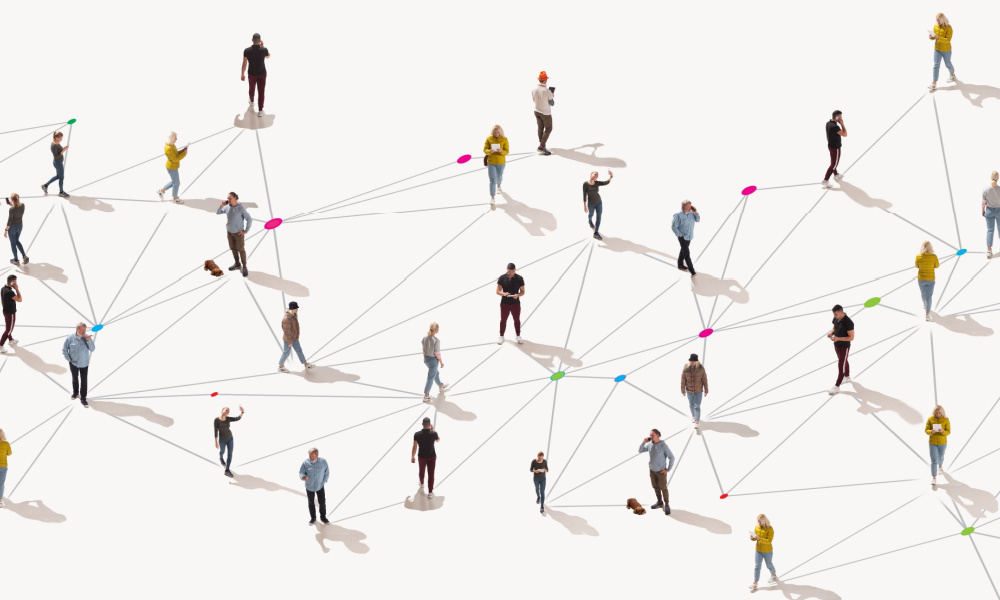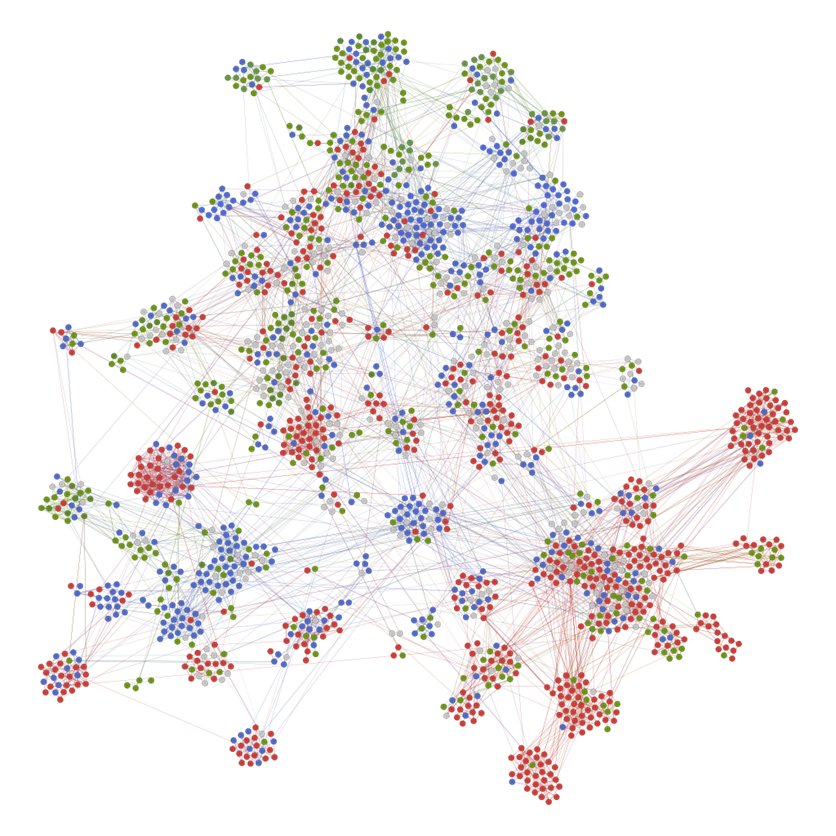Culture clusters: A new network approach for driving culture change
- 5 Min Read
Top-down approaches to organizational change are no longer effective. They assume culture attributes are uniform across the organization. For the new hybrid context, Michael Arena dives further into a network approach to culture and examines how focusing on culture clusters can develop targeted and impactful culture change initiatives.
- Author: Michael Arena
- Date published: Apr 28, 2023
- Categories

Organizational culture has long been a topic of interest and focus for leaders, managers, and human resource professionals. It’s often described as the “predominant beliefs, values, and behaviors of the organization as a whole.” However, the way organizations have traditionally approached culture and culture change is problematic. It’s time for a new perspective.
Leaders often attempt to drive cultural change initiatives by setting a core set of values and behaviors. But this approach assumes that culture attributes are uniform and spread evenly across the organization. The reality is that culture is rarely monolithic, and behaviors tend to cluster in local pockets throughout the organization. Formal organizational structures only partially influence culture.
This shatters traditional perspectives about driving uniform culture change initiatives from the top down and underscores the importance of understanding how daily and local employee interactions shape and reinforce culture.
What are culture clusters in a network-based approach?
Using a network analysis lens, we can see these pockets of behavior clustering. For example, the organization below has just over 1,900 employees.
By mapping individual behavioral strengths from a 360 review into the network, we can see distinct local clusters. The network diagram represents an operations function with an embedded service team. When we map the network with the individual strength behaviors from a 360 review (represented by the blue, red, and green nodes), we can see distinct clusters of behaviors.
In this case, just three of the ten culture attributes represent more than 80% of the network. These three behaviors are tightly clustered with one another. The service team on the bottom right of the network diagram is highly “relationship-oriented.” This is indicated by the strong pockets of red nodes. Meanwhile, the broader operations team has distinct pockets of relationship orientation, along with strong pockets of behavior around “operates with speed” (green nodes) and being “results-driven” (blue nodes).
These clusters of behaviors generate healthy tension that results in better outcomes for the broader business. They challenge the organization to drive results at speed, but to do so without sacrificing long-term relationships. The clusters of “operates with speed” are most notable on the edges of the network around 12 o’clock. Meanwhile, the clusters of “results-driven” behavior scatter throughout the diagram. Combined, these patterns of behaviors demonstrate that culture is not monolithic and that different behaviors tend to cluster in different pockets across the organization.
Why culture clusters matter to hybrid culture change
One of the biggest concerns businesses have today is how culture translates into a hybrid context. In the case above, we were able to evaluate this organization across three distinct cycles: predominately in-person interactions, exclusively remote interactions, and then finally, a hybrid working perspective. We found the level of clustering, for the most prominent behaviors, is just as likely in a remote working environment, as it is in an in-person environment. The findings support the notion that we can cultivate culture locally in a hybrid context.
However, the connections across (bridging connections) these clusters did shift in most organizations we have analyzed. For example, in one solutions development function, overall connectivity dropped 22% from the in-person cycle to the remote cycle. The majority of this network erosion occurred between work groups. As a result, groups with a strong relationship orientation pulled away from groups with strengths in operating with speed. This level of separation in a hybrid context creates a long-term risk associated with a reduction in healthy tension from cluster to cluster. In turn, this increases the likelihood of cultural sub-optimization.
Shaping culture change with a network approach
So, what does this mean for driving cultural change initiatives? First, it underscores the importance of understanding the pockets of behavior clustering in an organization. Attempting to drive uniform cultural change initiatives will not be effective since behaviors tend to cluster in different pockets across the organization. Instead, leaders should focus on understanding the local interactions and relationships that shape and reinforce culture in different parts of the organization.
Second, it highlights the need for a different approach to cultural change initiatives. Rather than attempting to drive change from the top down, leaders should focus on empowering employees to shape and reinforce culture from the bottom up. This means creating opportunities for employees to build relationships, collaborate, and share knowledge.
The importance of a network-based approach
Finally, it highlights the importance of a network-based approach. This approach provides a comprehensive view of the informal social structure of an organization. It is critical in understanding how people interact, share information, and collaborate. A network-based approach helps organizations identify clusters of individuals who share similar attitudes, beliefs, and behaviors. This understanding can help leaders identify cultural clusters. They can develop targeted culture change initiatives that are specific to the needs of each group. It is a substantive upgrade on implementing a one-size-fits-all approach.
Furthermore, a network approach can help leaders empower employees to shape and reinforce culture from the bottom up. They develop shared values and behaviors that are relevant to different pockets of the organization. They can cultivate a more effective and unified organizational culture.
Understanding how culture is shaped and reinforced by the daily and local interactions of employees is critical to driving effective cultural change initiatives. By focusing on local pockets of behavior clustering, empowering employees to shape and reinforce culture from the bottom up, and using network-based approaches to identify cultural clusters and bridging connections, leaders can create a more inclusive and effective culture that supports better outcomes for the organization.
________________
Michael Arena is the author of a best-selling book, Adaptive Space: How GM and Other Companies are Positively Disrupting Themselves and Transforming into Agile Organizations. He is the former Chief Talent Officer for General Motors Corporation.










